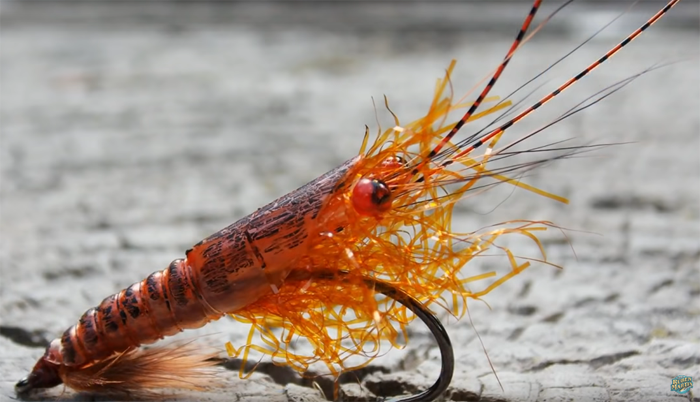This Ruben Martin shrimp (in pinkish) has proven killer on the flats
By Skip Clement
[dropcap]B[/dropcap]onefish, tarpon, redfish, snook and other pez de pesca deportiva around the globe find their way to deep water in one or more annually occurring cycles to spawn. They, like all aqua predators, are called to their hallowed grounds for sex — a short period after which they are famished and feed aggressively.
In every month of the year, however, these beasts of prey are driven to specific coordinates by the need to eat. The flats, where they most like to go are the shallows that front saltwater shorelines – it’s where the game fish as mentioned earlier go and where we can best pursue them to catch for the sport of it – sandy beaches, marshes, and mangroves.
In academia, the listing of fish these animals most prefer are crustaceans [shrimp, (crayfish-freshwater), lobsters, crabs] and mollusks, worms, and baitfish. None of the mentioned animals will refuse any of these prey offerings in the right setting and offer. But, for fly fishers, even metal and bait chuckers have a tough time competing with phenomena like a mullet run where fish by the millions run to their feeding and/or spawning grounds en masse. Throwing a fly, lures, piece of bacon into the mix of such ‘runs’ is like competing with a green drake hatch with one fly amongst millions of the real thing — not much chance of hooking up.
The perfect offering might be a shrimp but maybe pink?
I like fishing this shrimp fly as tied by Ruben Martin with mottled pink casing. It’s never failed me – always getting a bite from the predator fish mentioned above.
Here’s the recipe:
Hook: Ahrex NS156 Traditional shrimp #6 – this is a great hook. I’ve been tying Martin shrimp on a tube. No real report yet on that, but I cannot imagine a failing grade?
Antennas: Fine monofilament painted ORANGE (orange is okay rather than my pink preference) and black with permanent markers.
Eyes: Monofilament painted orange or pink with a black pupil.
Rostrum (beaklike projection): Pink arctic fox (couldn’t find pink) tail or equal in pink.
Shell: Transparent thermo-plastic (shrinks up) film pink paint pink and then craquelada (cracked/mottled) black color.
Rib: Fine monofilament – perfect segmenting material.
Body: Orange (pink) polar chenille – this is what stands-out pink or orange of whatever color you choose.
Note: Deer Creek fine UV resin for eye and shell termination and coating.


